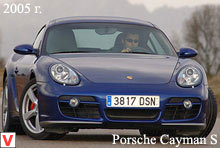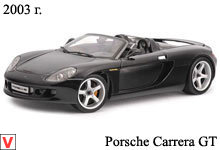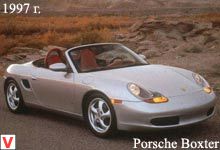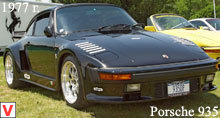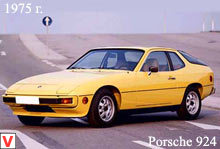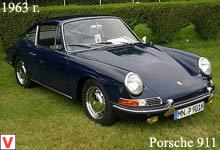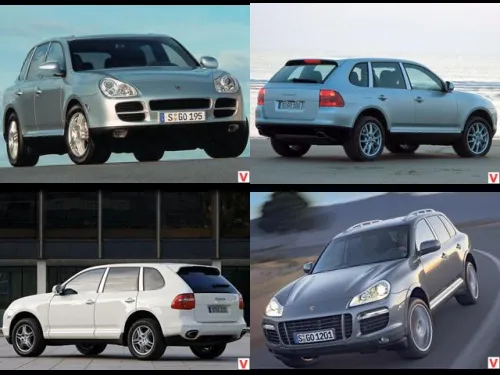
The first in the history of the Porsche brand SUV, called the Cayenne (a variety of hot West Indian peppers), debuted in early autumn 2002. The car was created jointly by Dr. Ing. h. from. F. Porsche AG and Volkswagen AG.
Volkswagen engineers designed the all-wheel drive transmission, while Porsche experts designed the suspensions and took over the work to fine-tune the chassis. Almost after the start of official sales, the Cayenne became one of the best-selling brands of the brand, despite the rather high price. Production (more precisely, final assembly, as the body is manufactured at the plant in Bratislava) of the car is deployed at the new ultra-modern Porsche plant in Leipzig. The Cayenne design is made in the same way as Porsche 911 sports models.
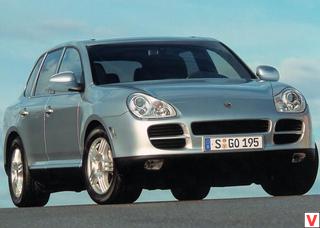
Among the characteristic features of the model are: drop-shaped headlights, an integrated front bumper with large air intakes, extended muscular wings and low-profile rubber on 17-inch or 18-inch alloy wheels. All versions of the first years of release (Cayenne, Cayenne S and Cayenne Turbo) are different nuances in the design. For example, the top version of the Turbo has a higher hood compared to the other versions with additional sub-stamping for turbochargers and a double central air intake. Overall dimensions, mm: Cayenne and Cayenne S —4782x1928x1699, Cayenne Turbo —4786x1928x1699. Wheelbase, mm: 2855. Ground clearance, mm: basic suspension —217; air suspension - from 157 to 273.
The car interior is made in the best traditions of Porsche. A lot of high-quality leather, certainly with embossed logo of the company, auxiliary systems and electronic settings. The design is widely applied aluminum and metallized plastic (pedals, center console, framing the gear selector, door handles), which gives the cabin a sporty charm.
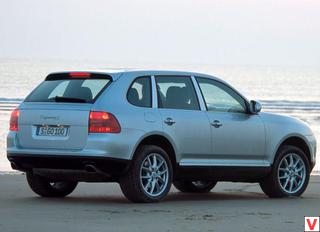
On the Cayenne dials are complemented by a large central display. This multifunctional device serves as a source of basic information, including a digital speedometer, a digital watch, an odometer for daily driving and a choice of a current radio station. The seats are comfortable and equipped with a full set of electric adjustment. For passengers of the second row there is plenty of space, both in width and for legs. The rear seat folds in a ratio of 40:60, forming a flat floor of the luggage compartment, the volume of which increases from 540 to 1770 liters.
Cayenne has power windows on the front and rear doors. If a special sensor detects an obstacle when closing the window, it automatically lowers the glass to prevent injuries or damage. If several windows are open, you can close them all at once, keeping the key in the locked position. Optional equipment on the Cayenne includes a new 3-spoke multifunction steering wheel.
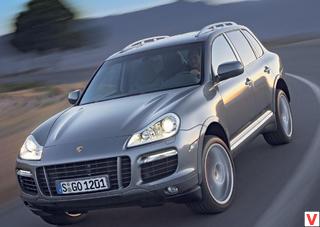
In its left part there are buttons designed to control the sound and control of all audio systems and telephone. On the right are the keys with which you can receive calls, select radio stations or CD tracks. The body of the Porsche carrier, however, is reinforced by the front and rear subframes, which reduces the level of vibrations. Suspension fully independent in front on double wishbone, multi-link rear.
For the basic version of the Cayenne with a V6 engine, there is an option with conventional springs without adjusting the clearance, while for the Cayenne Turbo, a standard air suspension is provided (as an option for the Cayenne and Cayenne S) with an air suspension that allows the clearance to be changed in the range from 157 to 273 mm. Thanks to Porsche Active Suspension Management, you can adjust the smoothness of the course, for which there are three modes - Comfort, Normal, Sport. Transmission scheme: permanent four-wheel drive with a center differential with electronic locking and a multi-point transmission, optionally a rear differential lock.
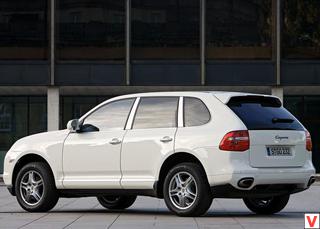
In normal operation, the differential distributes torque in the ratio of 33:62, but in the case of wheel slip of the front or rear axle, the clutch redistributes it between the axles from 0: 100 to 100: 0, depending on road conditions. In the case of the wheel slip of one of the axles, the PSM dynamic stabilization system comes into play, and on the roads it is possible to engage the lower row of the transmission and forcibly block the center differential. Porsche has created a new braking system based on the latest technology.
Cayenne is equipped with internally ventilated discs to ensure constant brake temperatures and, accordingly, has optimal dynamic capabilities, even during long descents on slopes. The front discs are clamped with 6-piston monoblock aluminum calipers, which are complemented by 4-piston calipers at the rear of the car. All four calipers are titanium lacquered.
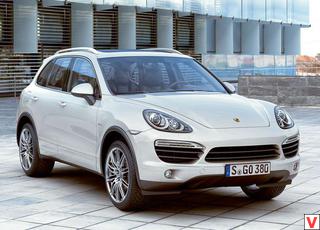
Cayenne meets all existing requirements for any type of protection against impacts, including frontal, side, diagonal and back impacts, as well as protection against overturns. The body has a triple-lined structure. The laser-welded sturdy construction provides exceptional rigidity and passenger protection, especially thanks to the extremely sturdy roof and pillars. The system of side and transverse elements in the front of the car helps to redirect the impact energy, which is absorbed by the 3-section deformation zone, protecting the interior. One of the special characteristics of Cayenne is the use of multi-phase steel.
Representing a unique combination of exceptional rigidity and persistent resistance to deformation, these springy alloys satisfy basic safety requirements. Cayenne has 2-phase airbags for the driver and front passenger. The front airbags are complemented by a new side impact protection system with side airbags built into each front seat. The safety curtains provide optimum head protection for both rows of seats. Two additional sensors are mounted in the front bumper of the Cayenne to determine the potential danger of a head impact. Airbags have the function of a two-level gas filling to reduce the burden on passengers. Both opening airbags use an azide-free gas, based on organic fuel.
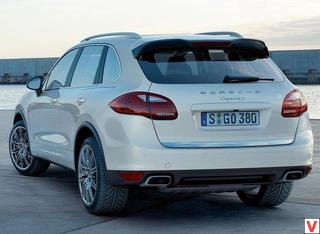
Cayenne has 3-point safety belts, as well as pretensioners and belt force limiters. Passive safety is extremely important, especially when it comes to children. That is why Porsche has developed a special range of child seats for all age categories.
Each such seat can be installed in the front passenger seat or in the rear seats using standard ISOFIX anchorages. The base Porsche Cayenne is equipped with a 3.2 l / 250 hp engine. The Cayenne S is equipped with a naturally aspirated 340-horsepower unit with a volume of 4.5 liters. The maximum torque of 420 Nm this engine develops at 2500-5500 r / min. Acceleration to "hundreds" takes 7.2 seconds, and the maximum speed is 242 km / h. The top version of the Cayenne Turbo has a 4.5 liter engine equipped with two turbochargers and 450 hp.
The maximum torque of 620 Nm develops at 2250-4750 rpm. With him, the car accelerates to "hundreds" in 5.6 seconds, and its maximum speed is 266 km / h. In addition, for the Cayenne Turbo an optional Power Kit package is offered, with it the engine power grows to 500 hp. The future owner can choose between a 6-speed automatic or a 6-speed manual gearbox. In January 2006, the Porsche Cayenne Turbo S made its debut at the Los Angeles Auto Show. It was built on the basis of the Cayenne Turbo. The key difference is forced up to 512 hp.
engine. This result was achieved by installing a larger intercooler, as well as increasing the boost pressure by 0.2 atmospheres. In addition to increasing engine power, these measures also allowed to raise the maximum torque to 720Nm, which are already reached at 2750 rpm. From zero to one hundred kilometers per hour, the Cayenne Turbo S accelerates in 5.2 seconds, and its maximum speed reaches 270 kilometers per hour. Behind the engine, Porsche engineers modified the brake system of the SUV by installing 380 millimeter brake discs in front of 350 millimeter discs, and the rear 330 millimeter discs were replaced by 358 millimeters.
In addition, the Porsche Cayenne Turbo S already includes 20-inch wheels with low-profile tires as standard equipment. The equipment of the top version of the SUV now also includes bi-xenon headlights, leather trim, powerful audio system and even a tire pressure monitoring system. In 2010, at the Geneva Motor Show, Porsche showed the second-generation Cayenne. The car was created on the Volkswagen Touareg platform, using Panamera components.
The SUV has become slightly larger than its predecessor. The length of the model has increased by 40 mm, but at the same time the weight has decreased by 165-200 kg (depending on the version and configuration). Exterior design is made in the same vein as the first generation model.
However, Cayenne II looks more dynamic and muscular (wedge-shaped silhouette, a special form of the rear rack, bulges on the rear spoiler, rear window, tapering at the bottom, etc.). The 2010 model has reduced air intakes and modified front and rear lights. The interior has been completely redesigned, the dashboard and center console are decorated in the style of the Panamera. The rear seat can be adjusted - tilt the back by 6 degrees and move it by 16 cm. At the same time, the Cayenne 2010 increased trunk volume in comparison with previous models (670 liters versus the former 550 liters).
Under the hood, a modified 3.6-liter V6 gasoline engine with a power of 300 hp, with improved fuel consumption by 20%. In a mixed cycle, a car with such an engine consumes 9.9 liters per 100 kilometers. This was achieved thanks to special developments - a system of direct injection of gasoline and a system of infinitely variable phases in the gas distribution at the inlet and outlet.
The Cayenne S version is equipped with a 4.8-liter V8 engine, 400 hp, and the Cayenne Turbo version uses the same engine, but with dual turbocharging, 500 hp. Both versions of the V8 have become more economical by 23%. The diesel 3.0-liter V6 engine, which debuted on the Porsche Cayenne in 2009, migrated to the new model without changes - power 239 hp, torque 550 Nm, however, due to the installation of a new transmission, acceleration time to 100 km / h decreased to 7.8 seconds. Fuel consumption decreased to 7.4 liters per 100 km.
The 2010 Porsche Cayenne was introduced for the first time in the hybrid version (Cayenne S Hybrid), which consists of a 3-liter V6 engine with twin-turbocharging from Volkswagen with a capacity of 333 hp and a 45.5-strong electric motor. The total power of the hybrid 380 "horses", and the maximum torque is 580 N • m, and 580 "Newtons" can be obtained already at 1000 r / min. The maximum speed of 242 km / h, acceleration to "hundreds" of 6.5 seconds. The average fuel consumption of such a machine will be 8.2 liters per 100 km. Payback for efficiency - reducing the trunk volume by 90 liters. The transmission is an eight-speed Tiptronic S, which is paired with the stop-start system.
Mechanical 6-speed gearbox is offered only for the initial version with a 3.6 liter engine. All cars are equipped with all-wheel drive Porsche Traction Management, which has become the hallmark of the manufacturer. It combines an active four-wheel drive with electronically controlled multi-disc clutch, traction control, as well as imitation locking of cross-wheel differentials.
